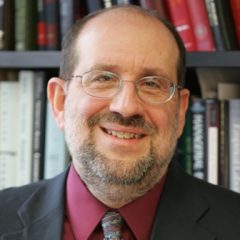(p. A17) Last month’s announcement that Indiana’s Purdue University would acquire the for-profit Kaplan University shocked the world of higher education. The Purdue faculty are up in arms. The merger faces a series of regulatory obstacles. And it’s unclear whether the “New U,” as the entity is temporarily named, can be operationally viable or financially successful.
But Purdue’s president, Mitch Daniels, is willing to give it a shot.
The venture is unexpected, unconventional and smart. The nature of the partnership–in which Kaplan will transfer its assets to Purdue, a public university–is unprecedented. It’s also a rare instance of attempted self-disruption.
There are lessons here from the business world. In the seminal 1997 book, “The Innovator’s Dilemma,” Harvard professor Clayton Christensen describes how leading companies can do everything “right” and still be thwarted by disruptive competitors. In an effort to appease stakeholders, leaders focus resources on activities that target current customers, promise higher profits, build prestige, and help them play in substantial markets. As Mr. Christensen observes, they play the game the way it’s supposed to be played. Meanwhile, a disruptive innovation is changing all the rules.
. . .
The higher-education industry, full of brilliant and competent leaders, is ripe for disruption. Despite mounting political pressure–not to mention the struggles of indebted alumni–most college presidents believe that their institutions are providing students with good value. By and large, they remain comfortable making small, marginal tweaks to their business models. In the meantime, college becomes ever more expensive.
In contrast, Mr. Daniels has a long history of bold, innovative moves.
. . .
Mr. Daniels is setting Purdue on the right course, for good reasons, and he deserves a great deal of credit. As the saying goes, a journey of a thousand miles begins with a single step. For Purdue, the next thousand miles will consist of navigating regulatory approvals, winning the support of stakeholders, and, not least, the hard work of building New U. We can be hopeful, on behalf of those left behind by today’s higher education system, that Purdue treads a path that others can follow.
For the full commentary, see:
Alana Dunagan. “The Innovator’s Dilemma Hits Higher Ed; Purdue’s acquisition of Kaplan University is risky, unconventional, unexpected–and smart.” The Wall Street Journal (Tues., May 16, 2017): A17.
(Note: ellipses added.)
(Note: the online version of the commentary has the date May 15, 2017.)
Christensen books relevant to the passages quoted above, are:
Christensen, Clayton M. The Innovator’s Dilemma: The Revolutionary Book That Will Change the Way You Do Business. New York: NY: Harper Books, 2000.
Christensen, Clayton M., and Henry J. Eyring. The Innovative University: Changing the DNA of Higher Education from the inside Out. San Francisco, CA: Jossey-Bass, 2011.
Christensen, Clayton M., and Michael E. Raynor. The Innovator’s Solution: Creating and Sustaining Successful Growth. Boston, MA: Harvard Business School Press, 2003.

